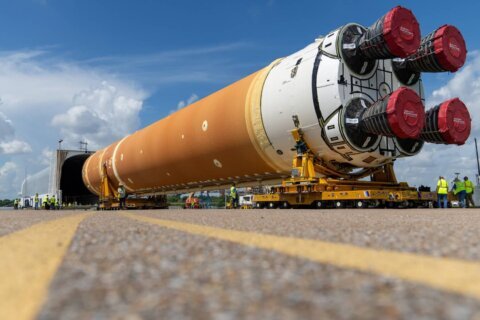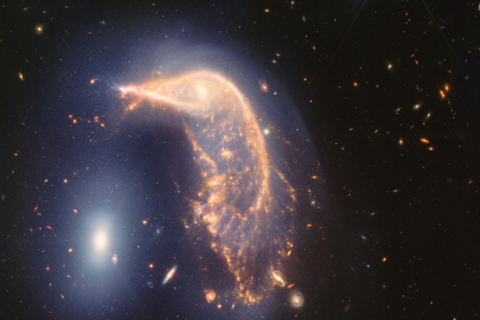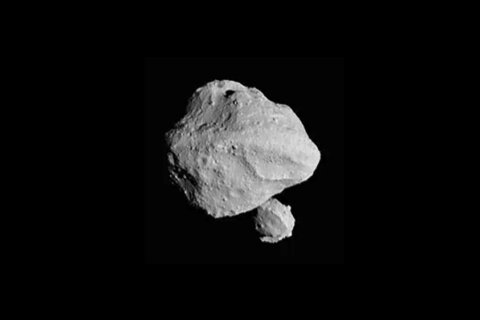I grew up watching Alan Shepard fly to sub-orbital space and all of the other Mercury flights. Then came the Gemini Program that gave NASA the techniques necessary for the Apollo Program to land Neil Armstrong and 11 other Americans on the Moon.
After the Moon came Skylab, America’s first space station. NASA then concentrated on Low Earth Orbit (LEO) missions for 30 years with the Space Shuttle and construction of the International Space Station (ISS) which has been continuously crewed for almost 21 years.
NASA is returning astronauts to the Moon and eventually Mars with its Artemis Program. The inaugural mission of NASA’s Space Launch System with an un-crewed Orion spacecraft, Artemis 1, is scheduled for later this year. Artemis 1 will fly a 21-day mission 280,000 miles from Earth — designed to test all systems. If successful, Artemis 2 will fly a probable repeat mission with four astronauts. Artemis 3 is scheduled for a crewed Moon landing carrying the first woman and the next man to set foot on the lunar surface. The launch dates for each of these missions are very fluid.
Billionaires have invested in access to space as Sir Richard Branson of Virgin Galactic, Jeff Bezos of Blue Origin and Elon Musk of SpaceX have all built space travel machines and the complex infrastructure necessary not only to access space but to promote and profit by space tourism. Each of these men envision selling seats to private citizens, allowing them to access space in the near future either at the fringes of space in a Virgin Galactic space plane, sub-orbitally in a Blue Origin New Shepard rocket and capsule, or LEO via a SpaceX Crew Dragon capsule and Falcon 9 rocket.
But today spaceflight and human history was made by the very first private citizens, not government astronauts or company test pilots, traveling to a distance of about 53 miles above the Earth’s surface in a private space plane built by Virgin Galactic, a billionaire owned company.
It was also a historic day for the number of humans in space at one time, 16 — seven on ISS, three on the Chinese space station and six on VSS Unity.
It has been interesting to see the themes touted in the media surrounding this historic event such as ‘The New Space Race’, ‘Billionaire vs Billionaire’ and the mixed feelings on Twitter among scientists, both positive and negative. Another theme has been “Where does space actually begin?” There are two main answers to this as explained in the above WTOP articles.
“Bezos’ Blue Origin company intends to send tourists past the so-called Karman line 62 miles (100 kilometers) above Earth, which is recognized by international aviation and aerospace federations as the threshold of space.
But NASA, the Air Force, the Federal Aviation Administration and some astrophysicists consider the boundary between the atmosphere and space to begin 50 miles (80 kilometers) up.”
To me all of this really confuses understanding the core of what is really happening with this historic flight — a new era of access to space.
I explained what the core accomplishment of a successful flight by VSS Unity would mean when I was interviewed by Marieke de Vries, USA correspondent, NOS Dutch Public Broadcasting Corporation, for her NOS article:
Space journalist Greg Redfern calls it progress: “This space race between the billionaires is a good thing. It is good for technological development, and it opens up space for more people than just governments. We need entrepreneurs who want to further open up space. Regulated by international government agencies, such as the FAA [and] the U.S. aviation authority, so that not everyone can do anything.”
“These are exciting times. The Wild West of space travel has begun. It’s like the trek west of ordinary Americans when they moved to California,” Redfern said. “The competition between the billionaires is therefore good. You can never have enough spacecraft to push your limits.”
I’ll be the first to say that $250,000 to $500,000 for a single seat on a Virgin Galactic trip to space does NOT fall into the purview of ordinary Americans but ONLY the very wealthy. There are hundreds who have made deposits to Virgin Galactic already and Jeff Bezos auctioned off a seat on his scheduled July 20 flight that netted $28 MILLION for charity. There are two other billionaire-funded private space flights currently scheduled, Inspiration4 and dearMoon. There are also plans to put a space hotel in LEO.
As these space ventures and the underlying technology mature with more and more flights, available seat prices will in all probability go down — just as they did in prices for booking on ocean liners and airlines. As I said to NOS, all of this has to be strictly regulated by international government agencies to ensure safety of flight and the conduct of legal commercial space tourism. It is very possible that space tourism will become a reality someday for those who want the ultimate get away.
Our long-term destiny to survive and thrive lies in space. Today marks the moment space tourism came into being. There will be conflict, controversy, deaths and triumphs along our way to the stars. I for one hope to live long enough to see a lunar colony and humans on Mars.
But to achieve this lofty goal, it needs our immediate attention and action here on Earth. There are converging crises that are happening now and in the near future driven by climate change. We need science, billionaires and governments focused on this issue NOW.
Without a healthy Earth there can be no space utopia.
Follow Greg’s daily blog and @SkyGuyinVA to keep up with the latest news in astronomy and space exploration. You can email Greg at skyguyinva@gmail.com.







